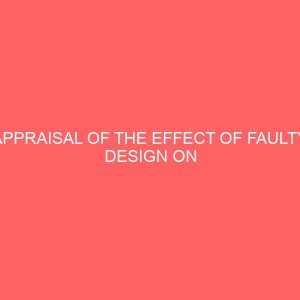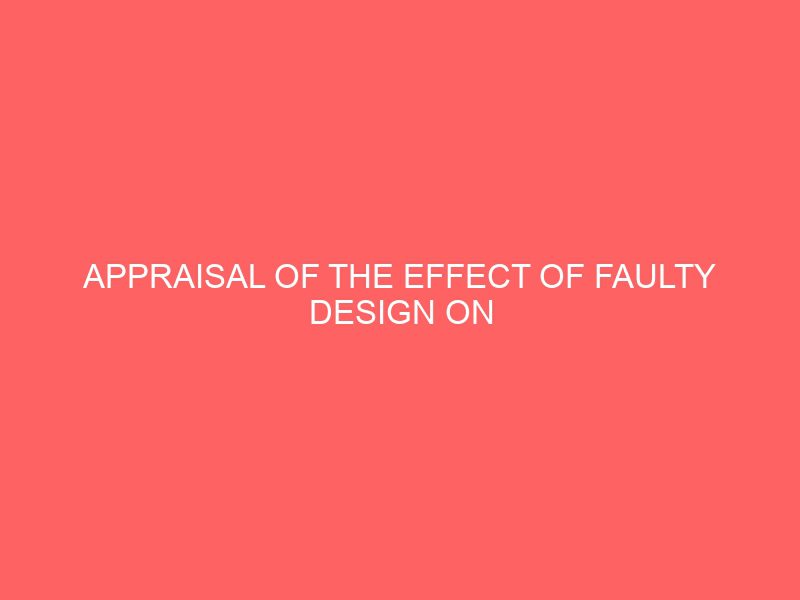Description
Abstract
At the design stage of a building, sufficient effort should be made to ensure that the design loads (dead, imposed and wind) are adequately determined. Some of the defects that arise during the service life of a building can be attributed to poor construction practice and inadequate quality control measures during constructions which culminate in early unplanned maintenance. It is against this backdrop that this research was carried out to examine the effects of faulty design on the construction and maintenance of building projects. In achieving these objectives, the study adopts a survey technique with a total of 45 questionnaires mainly for the professionals and craftsmen in the industry in which 35 were retrieved and used for the analysis. A survey of randomly selected samples of 25 building professionals and 20 craftsmen were conducted. Questionnaires were used to collect data from the team. Data collected were analyzed using the frequency table, mean item score, one sample z test. The study revealed that the use of construction management and the involvement of competent professionals would help reduce the effect of design failure. Loss of life was discovered to be the major effect of faulty design on the construction industry. The analysis reveals that the causes of faulty design have a significant effect on the construction and maintenance of building projects. The failures of buildings also have significant effects on the stakeholders. The study recommended among others that there should be a design review before finally approving the design for construction maintenance experts should not be overlooked in the planning stage of the project. .








Reviews
There are no reviews yet.